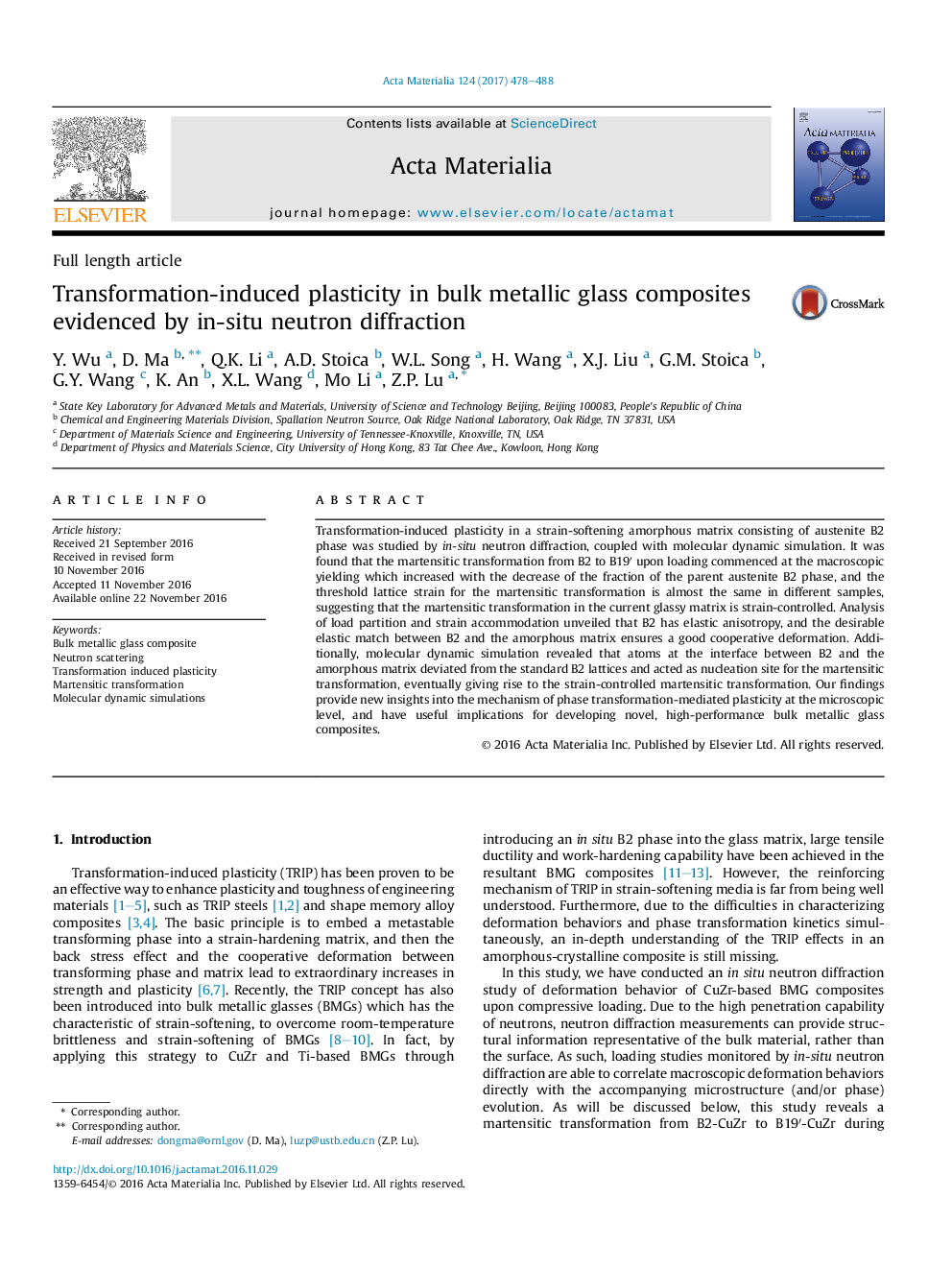| Article ID | Journal | Published Year | Pages | File Type |
|---|---|---|---|---|
| 5436467 | Acta Materialia | 2017 | 11 Pages |
Transformation-induced plasticity in a strain-softening amorphous matrix consisting of austenite B2 phase was studied by in-situ neutron diffraction, coupled with molecular dynamic simulation. It was found that the martensitic transformation from B2 to B19′ upon loading commenced at the macroscopic yielding which increased with the decrease of the fraction of the parent austenite B2 phase, and the threshold lattice strain for the martensitic transformation is almost the same in different samples, suggesting that the martensitic transformation in the current glassy matrix is strain-controlled. Analysis of load partition and strain accommodation unveiled that B2 has elastic anisotropy, and the desirable elastic match between B2 and the amorphous matrix ensures a good cooperative deformation. Additionally, molecular dynamic simulation revealed that atoms at the interface between B2 and the amorphous matrix deviated from the standard B2 lattices and acted as nucleation site for the martensitic transformation, eventually giving rise to the strain-controlled martensitic transformation. Our findings provide new insights into the mechanism of phase transformation-mediated plasticity at the microscopic level, and have useful implications for developing novel, high-performance bulk metallic glass composites.
Graphical abstractFigure optionsDownload full-size imageDownload high-quality image (358 K)Download as PowerPoint slide
